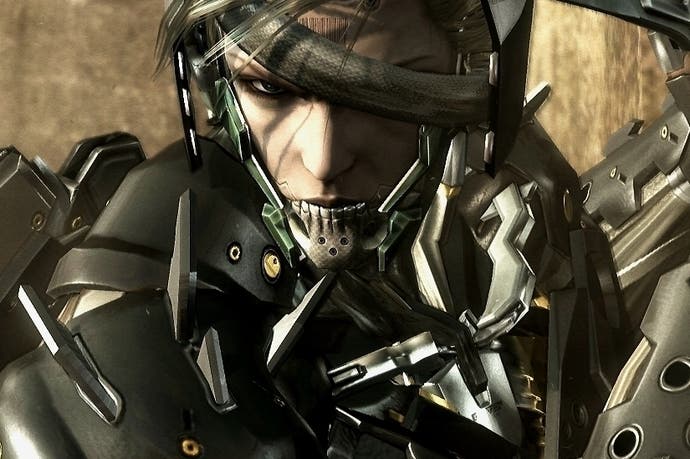PC Tech Comparison: Metal Gear Rising: Revengeance
The Platinum edition.
After little more than the odd, teasing tweet from Hideo Kojima to show for its vital signs, Metal Gear Rising: Revengeance arrives as a competent, if not entirely awe-inspiring port to PC. It's been almost a year since the PS3 and 360 releases, and so expectations are high for the esteemed Platinum Games to deliver more than just a barebones port of its latest hack-and-slash success. However, the lack of previous PC releases from the company over the last generation makes this a daring first attempt at the practise - with a mixture of results that mostly point to the positive.
A pocket of extras is added to make up for the lost time. What you get are the Bladewolf and Jetstream DLCs as standard, plus a theatre option to watch cut-scenes, and perhaps most exciting of all, a new Boss rush mode. It's a generous start that essentially riffs on the game's existing content to squeeze a few more hours out of ardent time-attackers and completists. The structure and flow of the main game remains perceptibly - sparing a few light tweaks here and there - as it always was on PS3 and 360, with nothing added to the story's length.
Any PC release opens the gates to some much-needed visual upgrades, and this is no exception. We get options for MSAA up to 8x, anisotropic filtering up to 16x, shadow quality leading up to high and, crucially, a resolution selector that reaches up to 1080p. To give the PC version a proper workout, we kick into gear our Intel i7-3770K PC, equipped with 16GB of DDR3 RAM and a GTX 780 Ti. With drivers updated to Nvidia's latest 332.21 revision, and the game fully patched up, we pin this latest edition up against those on console to see how the game benefits from being maxed out. Be sure to check out our extensive 60-strong comparison gallery for a closer look.
As a quick reminder of how the PS3 and 360 versions fared in our original comparison, both versions were well presented and near identical in many ways. However, neither used anti-aliasing to convincing effect, and each suffered from low quality shadows, while performance issues stripped both from the 60fps roll of honour. Platinum aimed for the gold standard in frame-rate and controller response, but fell well short of sustaining its target frame-rate.
One of the larger issues proved to be video quality on the 360 version, many of which were compressed thanks to its reliance on smaller DVDs. Weighing in at 24.6GB, the PC's overall table of contents falls in line with the PS3 release's disc size of 23.2GB. In other words, it qualifies for the same quality for pre-rendered cut scenes, avoiding any nasty macro-block compression.
Sadly, these remain at what appears to be the same resolution as on PS3 - 720p scaled to whichever resolution you have set, causing cinematics to appear blurrier than the regular game at full 1080p. The other downside is that 1920x1080 is the resolution ceiling: 1440p monitor users will be left wanting by the options available, and likewise for those with displays supporting refresh rates above 60Hz. The lock here is strictly fixed, and we hope a solution will come from Platinum Games itself via a future patch.
"Technical improvements for the PC port are threadbare - increased resolution, better shadows and support for up to 8x MSAA."
Alternative comparison: Metal Gear Rising: Revengeance - Xbox 360 vs. PC
In terms of performance, Revengeance has no problem holding a perfectly steady 60fps on our PC setup. This is a sticky area for the PS3 and 360 releases, neither of which can hold this rate for too long during battle, and where Microsoft's platform achieves an advantage of up to 10fps.
But perhaps this is predictable given that we're using a very high-end GPU. At a price-tag of £500, you'd certainly hope for results in this vein, and so we swap in AMD's circa entry £100 card - the R7 260X - to see how Platinum Games has stretched itself. And yes, it's obviously not quite the steamrolling we had just experienced at full settings on the 780 Ti, but nevertheless very impressive. If we target 1080p with all settings maxed out, there isn't enough memory bandwidth on the 260X to deal with 2x MSAA over the top, meaning a cut has to be made to prevent drops down to 45fps. However, by simply axing multi-sampling altogether, we're able to immediately get back a fluid 1060p60 with nary a stutter. It's business as usual.
By bringing up the task manager tab during gameplay, it's clear that Revengeance has been designed for CPUs with up to four cores. The game is well optimised, with computing tasks spread effectively across four cores of our chosen processor, and none coming close to peaking on the i7-3770K when overclocked to 4.3GHz.
There is an exception to the rule though, but it's reasonable. Another extra feature of the PC release is a "Zangeki" option for adjusting the number of times any object can be sliced. This now allows up to 400 vertices to be created across enemies and objects. It's a difference that isn't massively felt over the already convincing number possible on consoles, however, but we find our PC's CPU struggling to stay at 60fps once we're slashing between hundreds of these tiny pieces. Being the game's central gimmick, it's a novelty to see this idea taken further on unbounded hardware - but it's clear there's still a bottleneck when pushed to such extraordinary extremes.
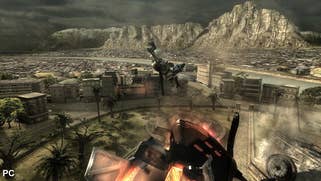
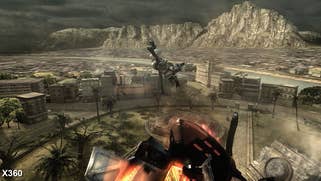

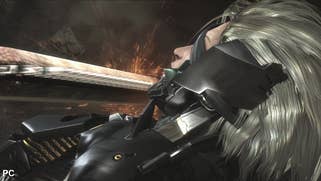
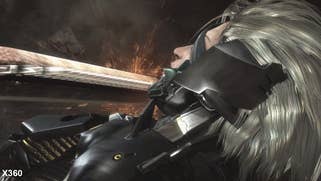
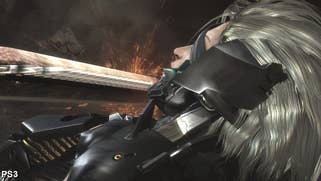
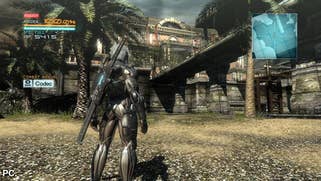
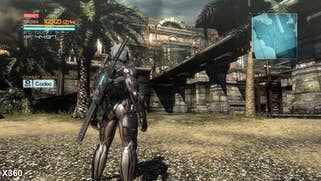
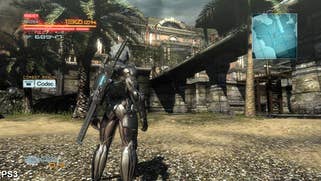
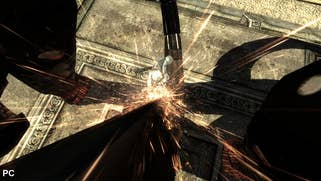
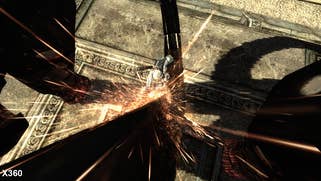
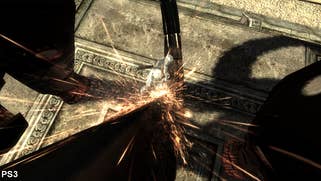
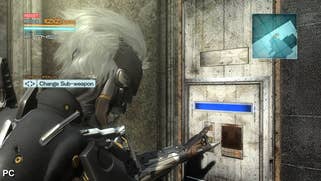
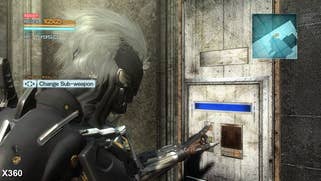
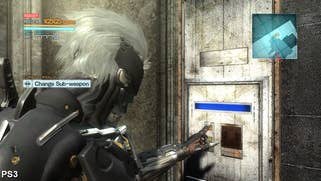

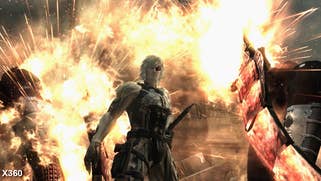
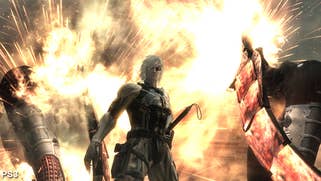
There's more good news to pile on here too, with the slower fade-outs of destroyed objects also added. It's a nit-pick, but trees and cars disappeared much too quickly after being sliced to ribbons on PS3 and 360, often fizzling into the ether in under 10 seconds. With an excess of RAM on most PCs, the time delay before these pieces eventually disappear is increased to 30 seconds to help sustain the illusion of a consistent world. Curiously this doesn't hold true of dismembered enemies after being sliced up; they still disappear momentarily after hitting the ground, but it's still a big improvement.
By and large, the game is well optimised at maximum settings, though the graphics menu is a touch underwhelming once we find all dials set to maximum. Most taxing is the MSAA option, which is overkill at 8x once the higher resolutions are set, but also skips over 2D elements such as foliage. In this sense, a post-processing alternative such as TXAA would have been a luxurious extra that could have given maximum coverage. Texture filtering is also massively improved on PC, where selecting 16x sharpens up textures in the background hugely.
But as for the core assets, there's been no real change. All textures and character models go almost entirely untouched since the console outings, as does the broad spectrum of effects-work. All three versions look nigh on identical up-close - the saving grace being a bump in shadow quality for PC. "Even the shadow looks beautiful," a baiting Kojima tweet read months before its release, and sure enough Revengeance does deliver a marked improvement over the dithered, messy implementation on consoles. Playing with high shadows enabled, we catch stronger, bolder outlines to each character's shadow on PC - where the closest comparable setting on console is medium.
"The key advantage of the Revengeance PC port is the ability to run at 1080p - but curiously, higher resolutions appear to be off the table."

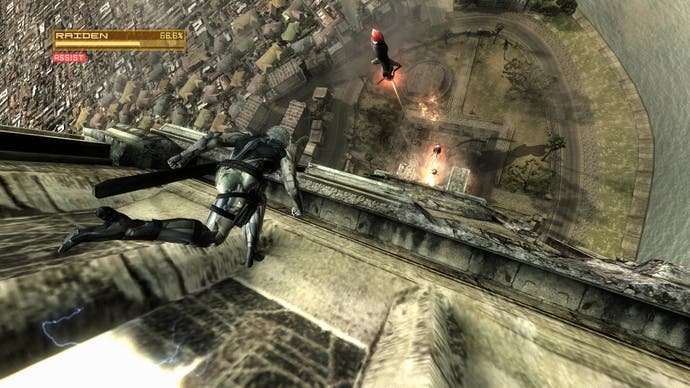
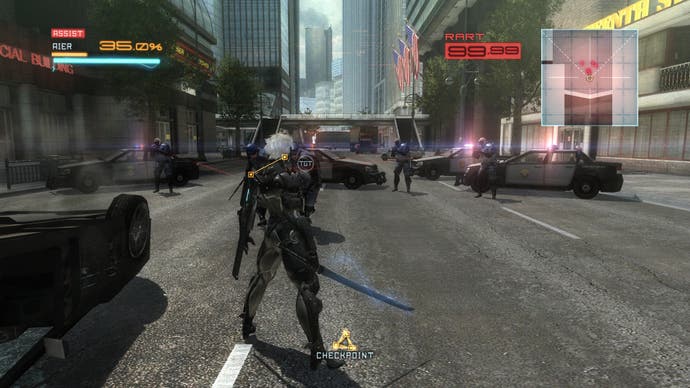
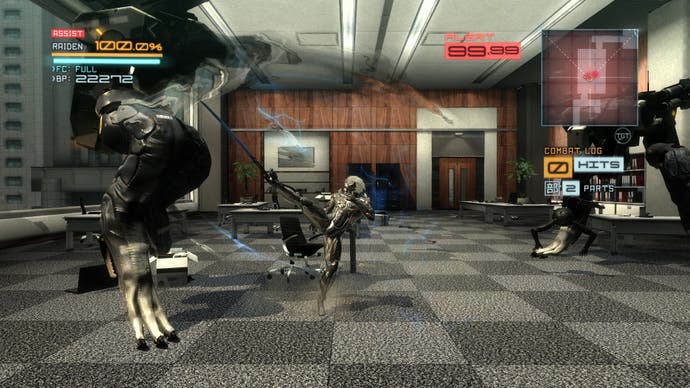
Metal Gear Rising: Revengeance on PC - the Digital Foundry verdict
It's strange to see an audacious developer like Platinum Games taking the safe, middle-ground route for a change, but that's exactly what we have with Metal Gear Rising: Revengeance. Make no mistake: this is a stable, well-optimised port, and one that services the original experience brilliantly for a whole new audience. As if making up for lost time, the extra features and bundled DLC also add value to a game that made its debut almost a year ago on consoles. The regret here though, is that this opportunity to work on Rising once again hasn't inspired the studio to stretch its graphical ambitions on PC hardware, nor drastically expand the breadth of the game's content.
As limited as they may be, the range of graphical options still manages to frame this as the definitive, and most playable version. At its best we have the rough edges on consoles smoothed over, such as the blocky shadows, the aliasing, and the dips below 60fps. An eye-opening bump to 1080p makes these tweaks particularly practical too, but again, the chance to address the game's rudimentary textures does go wanting. It's a game built to target the 60Hz refresh on last-generation hardware, with all the compromises that entails, but the fact of the matter is that many of the design choices haven't been tampered with in the jump to PC.
Taken as a first step of a much grander initiative though, this is still a small victory for Konami. Revengeance on PC won't go down in the annals of videogame history as the most luxurious of ports, but with enough commercial success this could be the springboard for greater efforts on PC in the future. And with Metal Gear Solid 5: The Phantom Pain and Lords of Shadow 2 already confirmed for a Windows release, that can be no bad thing. [Update: Metal Gear Solid 5 has been demoed on PC, and while likely, a PC port hasn't been officially confirmed yet.]
